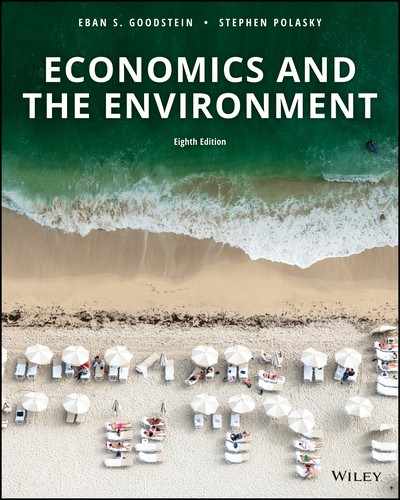PART II
Is Government Up to the Job?
The first part of this book focused on an explicitly normative question: how much pollution is too much? We analyzed several possible answers to that question—efficiency, safety, and sustainability—from both ethical and practical points of view. Having set a goal, at least in our own minds, we can now consider how to get there. As it turns out, we have one primary vehicle: government. From Chapter 3, we know that private markets generate too much pollution from both efficiency and safety perspectives. Thus, it is up to government to devise policies that modify market behavior and reduce pollution.
Government has a variety of tools at its command to attack the pollution problem, ranging from regulations and bans to pollution taxes and marketable permit systems to subsidy policies and infrastructure and R&D investments. But, before discussing policy details, we first need to consider a more central question: is government up to the job?
In recent years, many people have become skeptical of government’s ability to accomplish positive goals. This increased distrust may well have been fueled by the rising number and severity of problems we now expect government to resolve: providing security against terrorism, shoring up disintegrating families, tackling violent crime and drug abuse, reducing unemployment, poverty, homelessness and hunger, providing worker training and retraining, ensuring the safety of consumers and workers, and protecting the environment. As we have demanded more from government, we have perhaps become more aware of its limitations.
This part of the book provides an overview of governmental efforts to control pollution. This chapter begins by developing a theory of government action that highlights two primary issues: the information-intensive nature of environmental regulation and the potential for political influence in the regulatory process. In light of this theory, Chapter 13 reviews the major environmental legislation and Chapter 14 evaluates regulatory accomplishments and constraints, including a look at the vital, yet often overlooked, component of environmental regulation: enforcement and compliance.
The conclusions reached in this part of the book may seem harsh. At their best, regulators marshal the available information about environmental impacts and control costs and lurch in a steady, yet cumbersome, manner to define and achieve an environmental goal: “efficiency,” “safety,” or “sustainability.” At their worst, regulators become partners in a corrupt process where backdoor deals are struck with disregard for environmental consequences. More generally, legislating, drafting, and enforcing regulations are complex, tedious affair, the outcomes of which bears the stamp of the various organized interests likely to be affected. In general, interests with more resources have more influence.
Just as markets fail to deliver many desirable social goals, including a clean environment, so too does government have its own failings. It would be naive to think otherwise. The point of this section is to isolate and identify these problems so that government policies to promote a cleaner planet can become more successful. Is government up to the job of crafting sensible and effective policy to protect the environment? This is really a rhetorical question. If it is not, we had better make it so. It is the principal tool we have.
